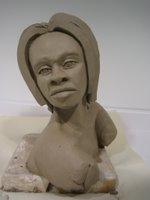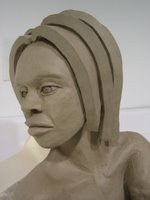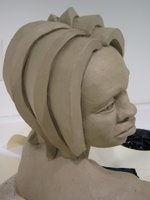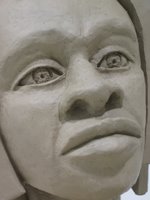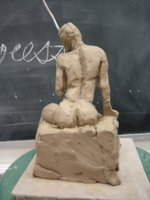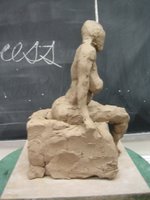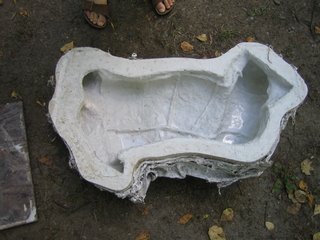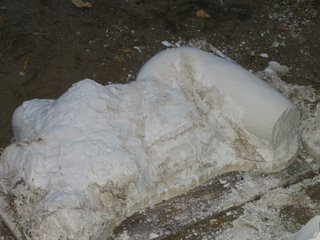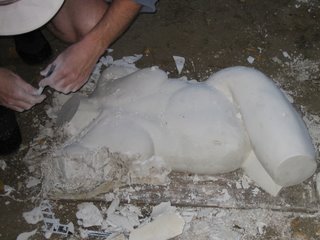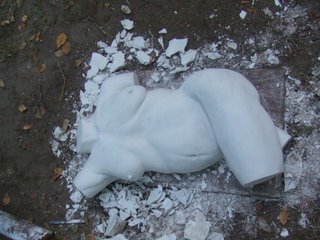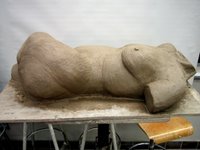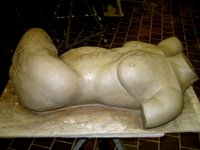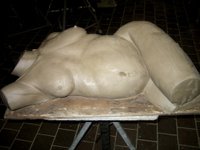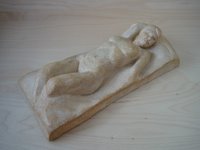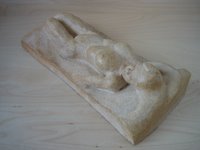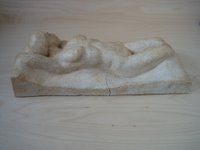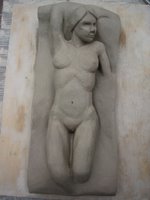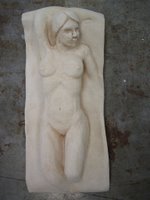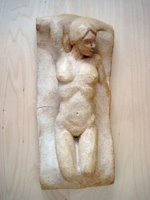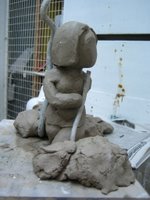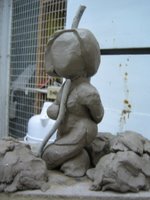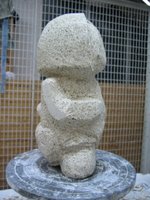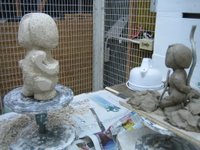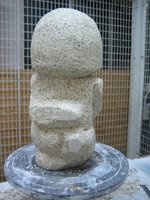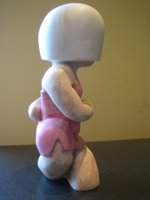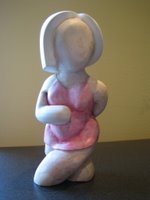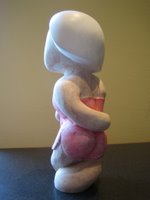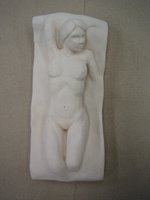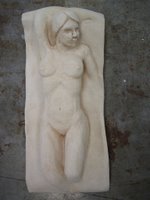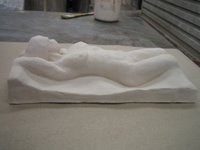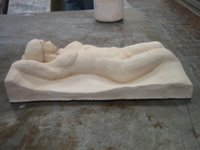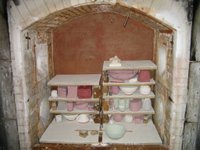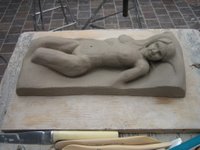This is sculpture is another small one like the Dancer. Like the Dancer I was board of modeling from life and decided to so something from my head. This one was original going to be more doll like, like the Dancer, but as I worked on it I added more and more detail. So it's kind of half way between the doll look and a realistically model.
I also wanted to add cloths to this one, but I ran out of modeling time. Cloths were going to take at least one more class then I had time. I like it as it is, but I wanted to make her look like she was part of a yoga class.
The pose is known as pigeon. This is a tricky pose that I've never seen anyone do live. Although I suspect a few people I've seen in class would be capable of it. My rendition has a few problems with it. When a real person does the pose there is more bending from the lower back, the head is almost upside down and looking backwards and the back thigh is closer if not flat on the ground. There is just a little too much backwards bend in the back leg.
When I stared it I hadn't seen the pose in a while so I was going completely from memory. I was also going for a particular look, and having here looking straight up was an important to the look I was going for.
The top pictures are of the sculpture in its clay form. This is the state it gets to just before beginning the molding process. The design is complete but the structure of the mold has not been completed.
The middle set of the photos is of the sculpture with the mold walls added. In most cases clay is used to build the walls between the different sections of the mold. In this case the sculpture was so small it was difficult to build the clay walls. The teacher suggested I try copper shims. The shims are cut from a very thin sheet of copper.
This particular mold is three pieces. This was done because there are three separate loops of open space in the model. If I didn't make the mold three pieces it would have been very difficult if not impossible to remove the clay and prep the mold for casting. However each piece you add to the mold increases the complexity of building and casting the mold. My rule of thumb is it takes one class for every section of mold you need just to build the mold. From there the prep time for casting the mold is about the same regardless of the number of pieces.
The copper was interesting to work with compared to the clay. The sections of copper closing in the inner loops I actually left in and were enclosed by the mold. This made for some flashing that I needed to break off and clean up, but otherwise worked great.
I treated the outside pieces the same as I would treat a clay wall when mold making. Once one side was built up in plaster I removed the copper and prepared a slip wall so I could apply plaster to the next section and pieces would still separate. I learned later that when using copper shims you are supposed to just leave them all in place. However I think it worked much better doing it the way I did it.
The final set of pictures is of the mold itself. The first one shows the size of th mold when it's all together. The second photo is the inside of the three pieces, and final it's the inverted mold filled with Densite. I cast this particular mold up at a cottage I was renting with friends from work. Casting is one of the few things I can do outside of class, however I have to do it somewhere I can get messy.
Once the Densite has cured in the mold the mold is chiseled off. Unfortunately I don't have any pictures of the final piece yet. That will have to wait for another post.










